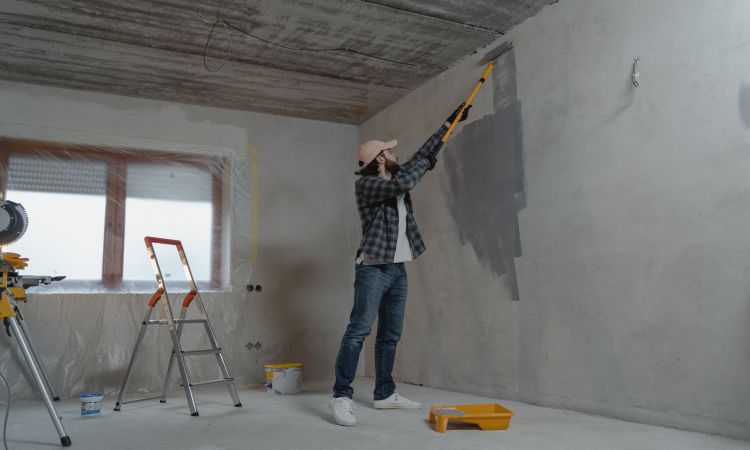 A family of skilled handypersons and seasoned DIYers can take on any home improvement challenge with extensive research, budgeting, and strategizing. Whether you’re planning to build an outdoor deck or dig up a luxurious swimming pool, DIY demands comprehensive planning and research.
A family of skilled handypersons and seasoned DIYers can take on any home improvement challenge with extensive research, budgeting, and strategizing. Whether you’re planning to build an outdoor deck or dig up a luxurious swimming pool, DIY demands comprehensive planning and research.
First, you need to prepare a budget and invest in the specialized tools required for executing your project. It’s wise to consult an architect or contractor for design plans if you’re planning to erect a patio or other significant upgrades. Nonetheless, if you’re confident in your skills and creative approaches, we advise setting priorities and gaining professional insight when needed.
Keep reading to explore some crucial steps to planning a DIY home improvement project.
1. Declutter & Relocate Valuables
Splatters of paint and incidents involving heavy tools can ruin your Art Deco bed, fluffy white rugs, and other valuable possessions. Can you imagine having to restore your precious antique chest should it get damaged while fixing structural defects? It’s wise to declutter your home extensively and relocate all valuable possession somewhere.
Suppose you’re planning a home improvement project involving multiple bedrooms, a living room, or the kitchen. In that case, relocating expensive appliances, luxury furniture, artwork, antiques, and precious fixtures is a wise decision. You can enlist the help of family members and friends, requesting them to lend you some space temporarily. However, if you don’t want to cramp their comfort, consider renting a storage unit near your neighborhood.
We advise enlisting Google’s help in finding a reputable and quality-driven storage facility near your home. A location-based search will round up the best storage facilities, and you can explore Google My Business (GMB) profiles to streamline options. Suppose you’re looking for a temperature-controlled storage unit in Dallas, Texas. In that case, type in the keywords “Dallas storage units” to find the most relevant results.
Be sure to verify all digital credentials before booking in-person visit appointments, and take quotes from multiple facilities. Then, streamline your best options and schedule a detailed inspection of the storage units, security measures, and amenities. The nearest storage unit is always ideal, as it allows access to retrieve your things within minutes.
2. Budgeting the Right Way
DIY home improvement projects often cost much more than the standard rate a contractor would charge. If the underlying purpose of going DIY is to cut corners, then you need to plan and spend very carefully. Start your project by budgeting every cost you expect to incur while procuring raw materials, equipment, etc.
First, you need to decide the amount you’re planning to spend on this project and set benchmarks for your desired affordability. Then, set aside an emergency fund to cater to unplanned mishaps, liabilities, and inconveniences. Divide the amount to set limitations on your spending for various expenses, such as raw materials, paint, equipment, tools, etc. Most DIYers max out their credit cards while exploring the tempting aisles at Home Depot, beckoning their inner craft-heads. It’s wise to make a detailed checklist while heading out for supplies.
We suggest keeping a journal for recording all expenses related to your ongoing home improvement project. It will help you keep track of all your spending and realize when you need to cut corners and set priorities. Most importantly, don’t use your credit card to fund your project. If the need arises, take out a home improvement loan as the interest rates are more flexible than credit cards.
3. Setting Priorities
Are roofing leakages a more pressing concern than building and decorating an outdoor seating area with a fire pit? Do plumbing issues take precedence over window repairs and repainting projects? How do you prioritize tasks that matter and those that can wait?
It’s crucial to understand that your property’s foundational and structural integrity is more significant than its cosmetic appeal. If the structure crumbles or weakens, it will give rise to thousands of dollars worth of expenses. For instance, plumbing repairs can lead to water damage and flooding, rendering your property inhabitable.
Roofing leakages set the stage for water damage from one of the weakest structural links, the attic. They contribute to mold and mildew growth, seepage, drywall damage, and fire hazards. Setting priorities and scheduling large projects is wise before focusing on cosmetic enhancements.
4. Don’t Experiment with Home Components
Is it wise to meddle with the electric wiring if you have little or no experience handling electric components? Should you rip apart the kitchen’s plumbing system if you don’t have specialized skills and tools? It’s crucial to set some boundaries around your DIY expertise to avoid meddling in areas that don’t align with your skills.
There’s a fine line between being handy with tools to build wooden structures and fixing integral electric components. Repairing and working with electric and plumbing components requires specialized training and expertise. It’s wise to bring in experts and professionals to handle some complex aspects of the project.
Suppose you’ve constructed a beautiful deck adjacent to a swimming pool with a fire pit and a grilling station. In that case, consider hiring electricians and plumbers to work out the mechanisms of the electric and water-related systems for your project.
Final Thoughts
Planning and executing a DIY project demands diligence and controlled spending. Don’t hesitate to consult experts and rely on research to sort out complications before they arise. We wish you good luck with your project.




